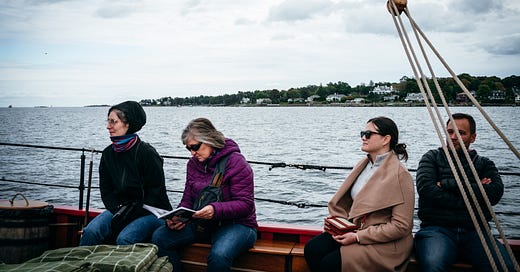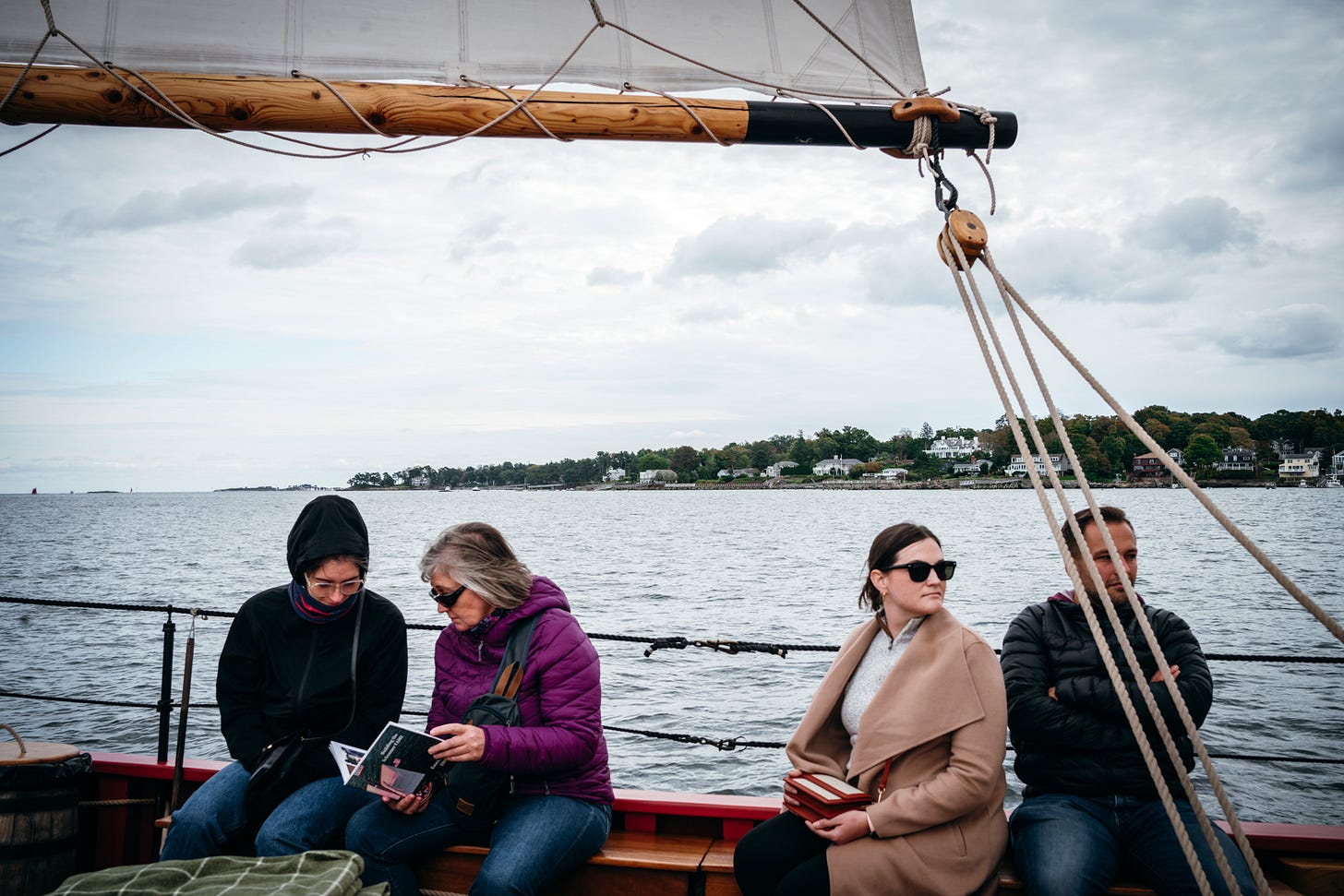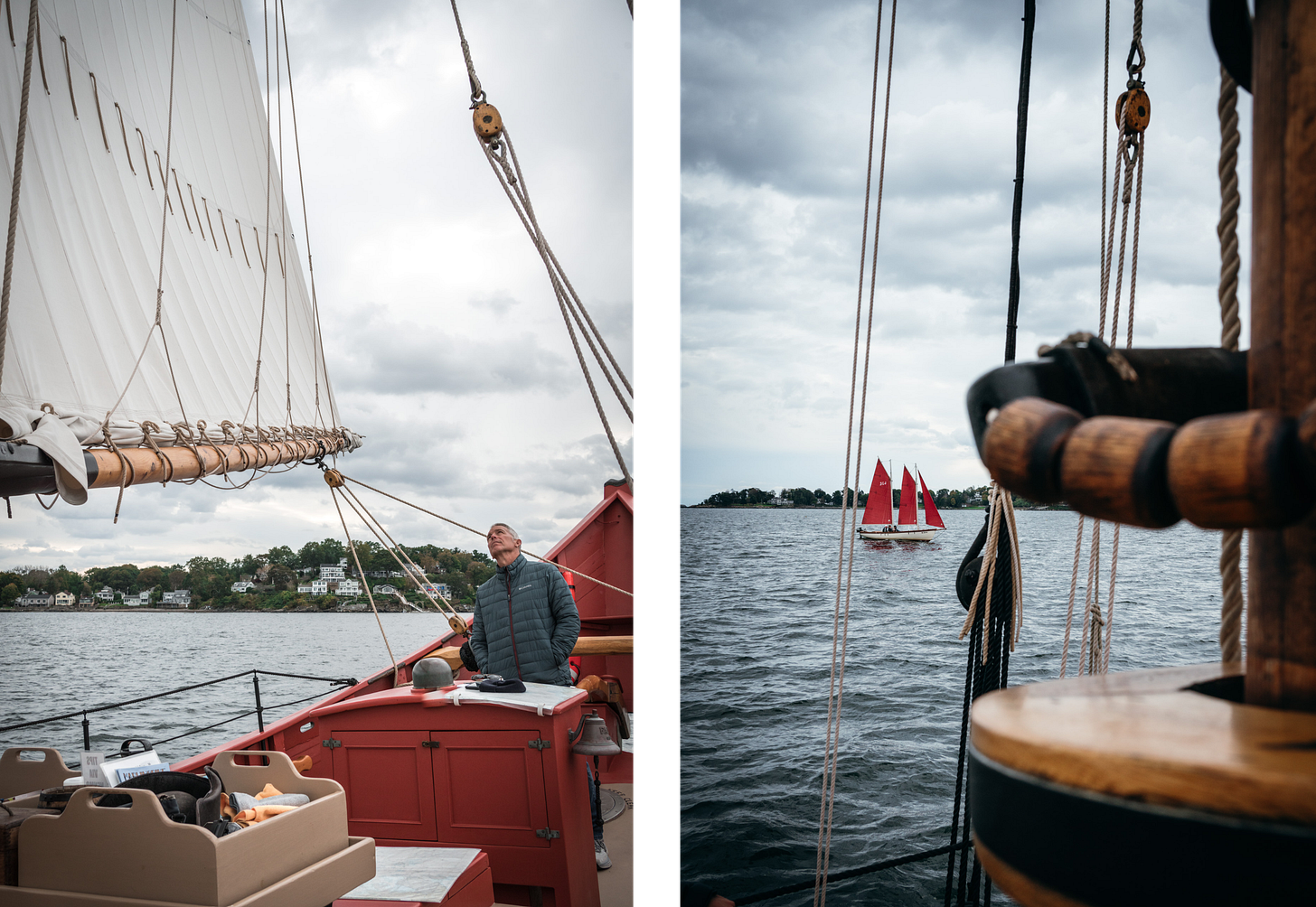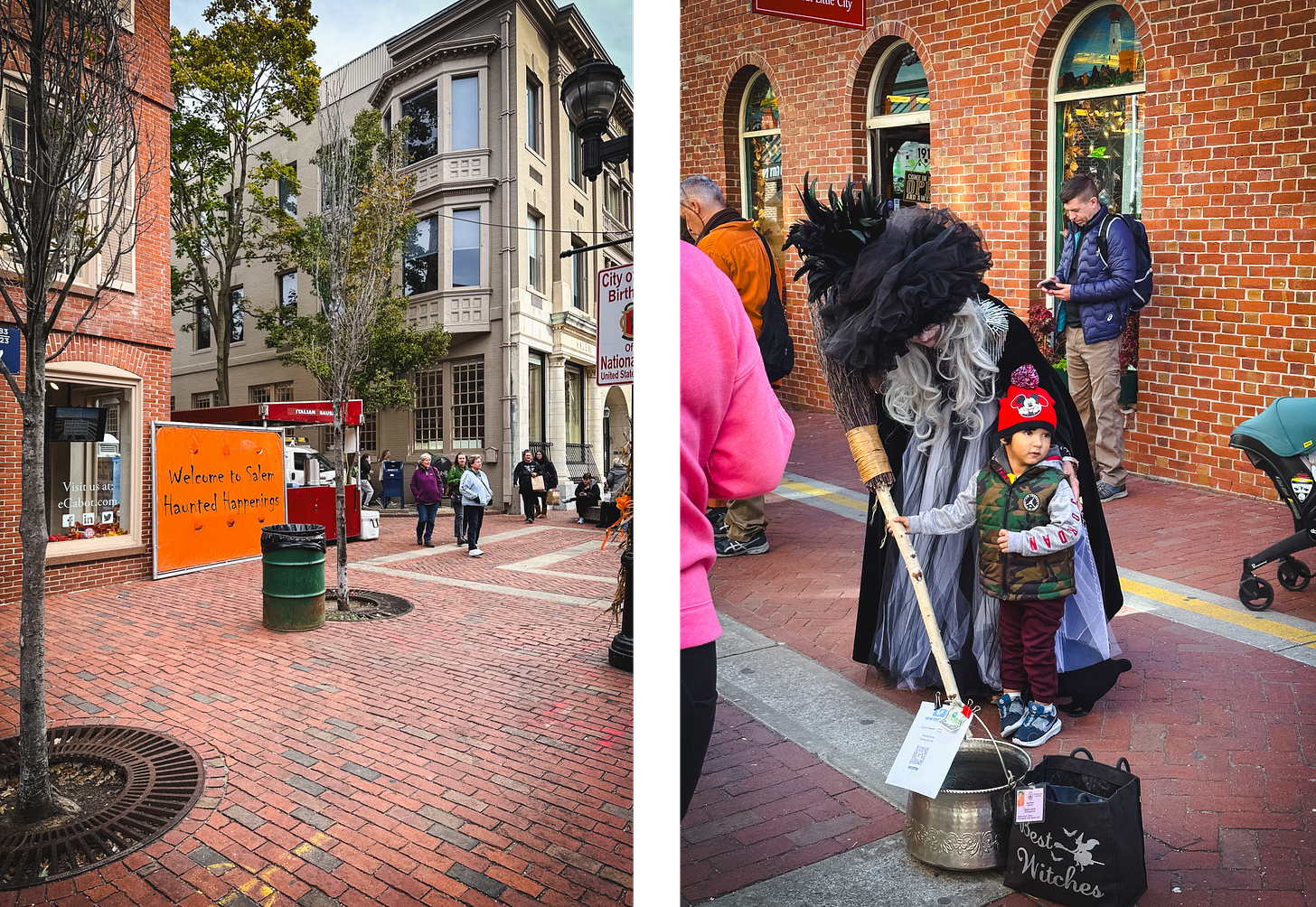Salem Beyond its Witches
A city that showed the human’s worst, the best and from which we still have a lot to learn
The city of Salem, in Massachusetts, is synonym of witches, spookiness and a world emblem of Halloween. But what do locals think about the increment of population from 40.000 to 100.000 in a matter of weeks each year? Is there anything else to this city than Haunted Happenings?
I have been guilty of visiting the city in October, when it’s most crowded. I did it last year after having moved to Boston from Europe and even if it was the first weekend of the month, 4 weeks until Halloween, it was packed. It was impossible to get into the Witch Museum and we just wandered around the main streets aimlessly.
My husband Ross doesn’t appreciate crowds very much so after a while we tried to find a quiet spot by the wharf. It was only a couple of blocks away but a world apart. No signs of skulls, ghosts and selfies. Just the cold waters of the Atlantic Ocean and a couple of restaurants. After lunch we realised there was a boat in front of us that was open for tours. We decided that could be an interesting way to spend the afternoon.
The air was crisp and the crew passed blankets to keep us warm in the replica of the 1812 schooner Fame. After leaving the peer behind, the motor stopped and we were only pushed by the wind. Voices became quieter and murmurs led to silence. For a few moments we could only hear the water breaking on the bow.
Our captain explained the importance of the location: “It wasn’t witchcraft what put Salem on the map, it was maritime trade. It was the 6th largest city in the country back in 1790s, and the richest in the country at the end of the century: not NYC, not Philly; Salem.” The port of Salem was one of the busiest of the country and sailing ships like the Fame would cross oceans trading goods to China, Spain and India.
“In the two decades following the American Revolution, Salem’s sailing ships returned from China and East India (as Americans then called India, Indochina and the Malay Archipelago) brimming with tea and spices, silks and porcelain, ivory and gold dust. <<Boston was the Spain, Salem the Portugal, in the race for Oriental opulence>>, wrote historian Samuel Eliot Morison in 1921. Salem’s hugely profitable trade with the Orient transformed this hardscrabble New England seaport into a global powerhouse and, by the early 1800s, the wealthiest city per capita in the United States.” Doug Stewart, Smithsonian Magazine
Many of the acquisitions made by globe-travelling sea captains can be visited in Peabody Essex Museum, the oldest continuously operated museum in the country, located in the heart of Salem amongst spectacles like “Professor Spindlewink’s World of Wizardry” and “Black Cat Tours”.
At the end of the 18th century it was not satanic presences and ghosts what populated the city but “the fragrance of tea, pepper and cinnamon perfuming the muddy harbor”, says writer Doug Stewart. The Asian spices, highly valued at that time, were traded for iron bars obtained in St. Petersburg or umbrellas from Marseille. Salem’s merchants had stocked their ships with homegrown goods (like whale oil, salt cod, rum, prunes, tobacco) and swapped them in European and African ports for more valuable goods to trade with the Chinese and the governors of East Indies.
The value of cargo that arrived to the coasts of New England enriched many merchants, but mainly the ones in Salem and that transformed the city. “There were people here with so much wealth they could buy anything they wanted”, says Dean Lahikainen, the Peabody Essex’s curator of American decorative art. Mansions were built and tea, spices, silk and fine china were common amongst the high class of the city.
“Salem’s merchant fleet was hurt by a shipping embargo in 1807, then devastated by the British in the War of 1812”, explains Stewart. Salem’s vessels were now used to fight the war and that’s what happened with the Fame, our ship, which was privateered and loaded with cannons.
“In a war against the world’s most powerful navy, the mariners of Salem had few options open to them. They could carry on with business as usual, bringing back cargoes of tea, silks, and pepper from the rich East — but they ran the risk of being captured by British cruisers or privateers and losing everything. They could go privateering themselves, playing cat-and-mouse with fat British merchant ships and dangerous British men of war. Or they could ‘swallow the anchor’ — sit at home and watch their savings dwindle, praying for peace. Many Salem mariners chose privateering as being the least of the three evils — or at least the one in which they had most control over their destinies.” Fame of Salem
It was risky but it could also be highly rewarding. If an enemy ship was captured, the cargo could be kept and sold or turned in for money. Sailors were working for themselves but also helped the American navy by capturing British ships. The National Park Service states that: “In all, privateers damaged the British economy more severely than did the American navy: 23 American navy vessels captured 254 ships; the total privateer haul was 1,345 ships for a net worth of $45.5 million.”
Some months later, on April this year, a friend visited and we decided to go back to Salem and try again the Witch Museum. Although being the no. 2 biggest tourist trap in the world, according to USA Today, we were curious about it. I can now say I agree with the ranking. You sit for 30 minutes in a room where 13 life-size stage sets depict the 1692 Salem witch hunt. The history is very interesting, of course, but the scene is so gimmicky that is cringe-worthy. If you have the time, watch The Crucible (1996) and you’ll learn the same, if not more, than in the museum.
“Some tourists treat Salem like a movie set, but people live here year-round. The homes you see are occupied by real humans. Please be respectful of their property.” Says Eryn DiPhilippo, a Salem local. Reality is that while tourists come to experience a terrifying Halloween, it’s their presence what makes the city a living nightmare for the neighbours.
Tour guide and local Jeff Bellin explains that since moving to Salem in the late 1980s, the tourist season starts earlier each year. “Salem is a relatively poor city. Except for this time of year, there’s not a whole lot of tax basis. [It is the] Halloween capital of the world. We don’t have the infrastructure to be able to handle it…we don’t have the parking, we don’t have the restaurants, we don’t have the staff to staff the restaurants.” Bellin laments.
Despite the difficulties, most residents are happy living in the city. Its history and heritage make up for the inconveniences. We should remember where its importance lays, though. An anonymous resident shared their point of view to The Berkeley Beacon, believing it’s sacrilegious to take the witch trials lightly: “The witch trials are the foundation of our country’s legal system, which is important—not Halloween.”
It seems strange how the very superstitious idea that murdered the young women in the first place is what remained of the story and became part of pop-culture: witches as supernatural creatures that can conjure spells and that can be good (like Bewitched’s Samantha) or evil (like the Hocus Pocus sisters). Certainly, what we should fear instead are the very human ideas that lead to their deaths. Ideas that are more present now than ever. A shiver crosses my chest to the thought of such a misogynistic character becoming president of the United States… again!

It is fun to go to Salem prior to Halloween, I’m not going to lie. As it’s fun to go to Disneyland. But if you do, prepare for the crowds, be respectful of the locals, and try to immerse yourself in the history of the place beyond the shows and witches’ hats. If we are open to it, we can still learn a lot from the horrible events that took place here 300 years ago and from the ones that a century later made the city the richest in the country.
Salem fell victim of the obscure Puritan moral, arose and conquered the seas in search for a better prospect. It now leaves us with space for reflection, in search for tolerance and with the reminder that wrongful persecutions can lead to the worse outcomes. From Tituba’s false witchcraft to Springfield’s false dog-eaters. Forget the ghosts, this is what we should all be afraid of.











So interesting!! I’m so intrigued by the maritime history… fascinating to know Salem’s role in the spice trade and other commerce routes.